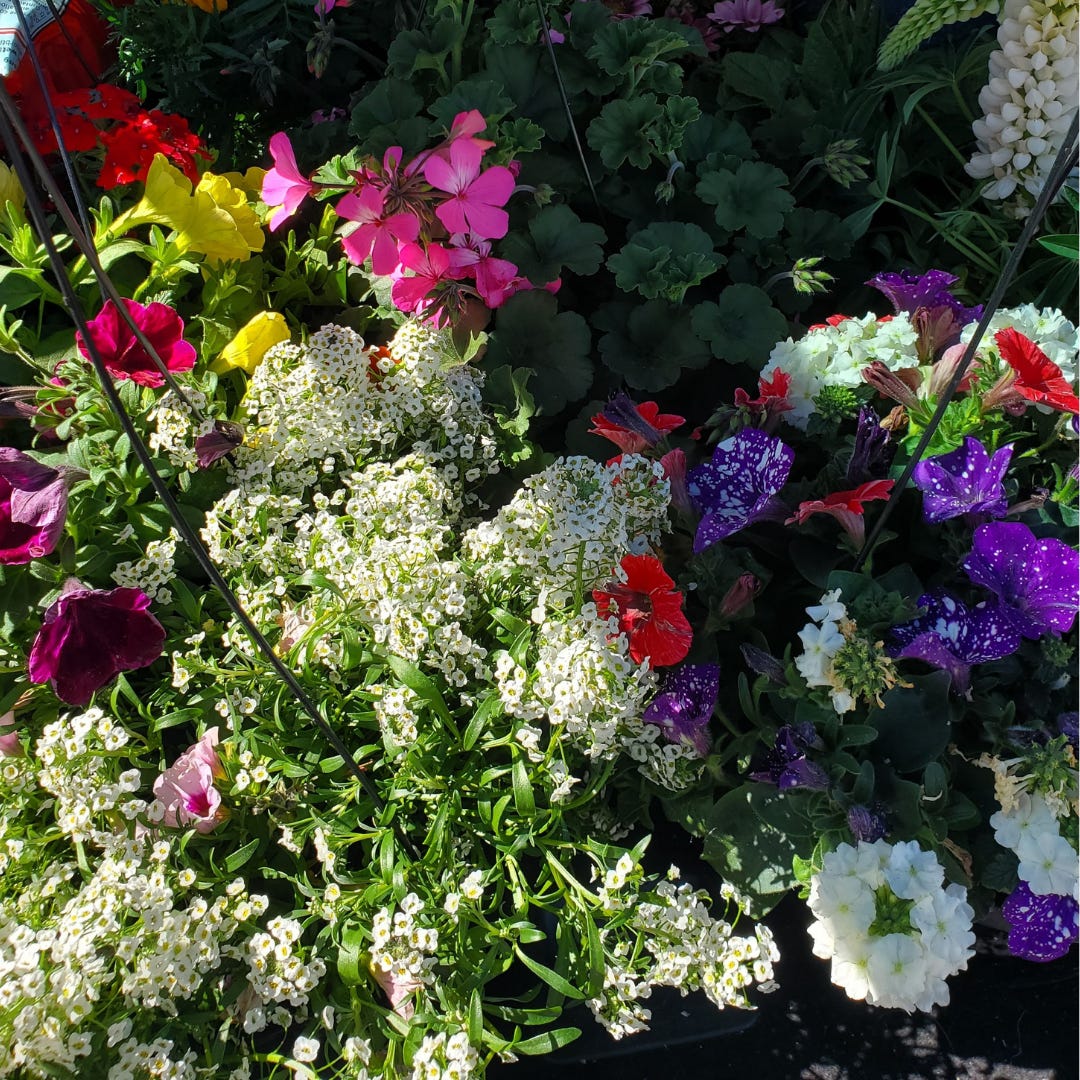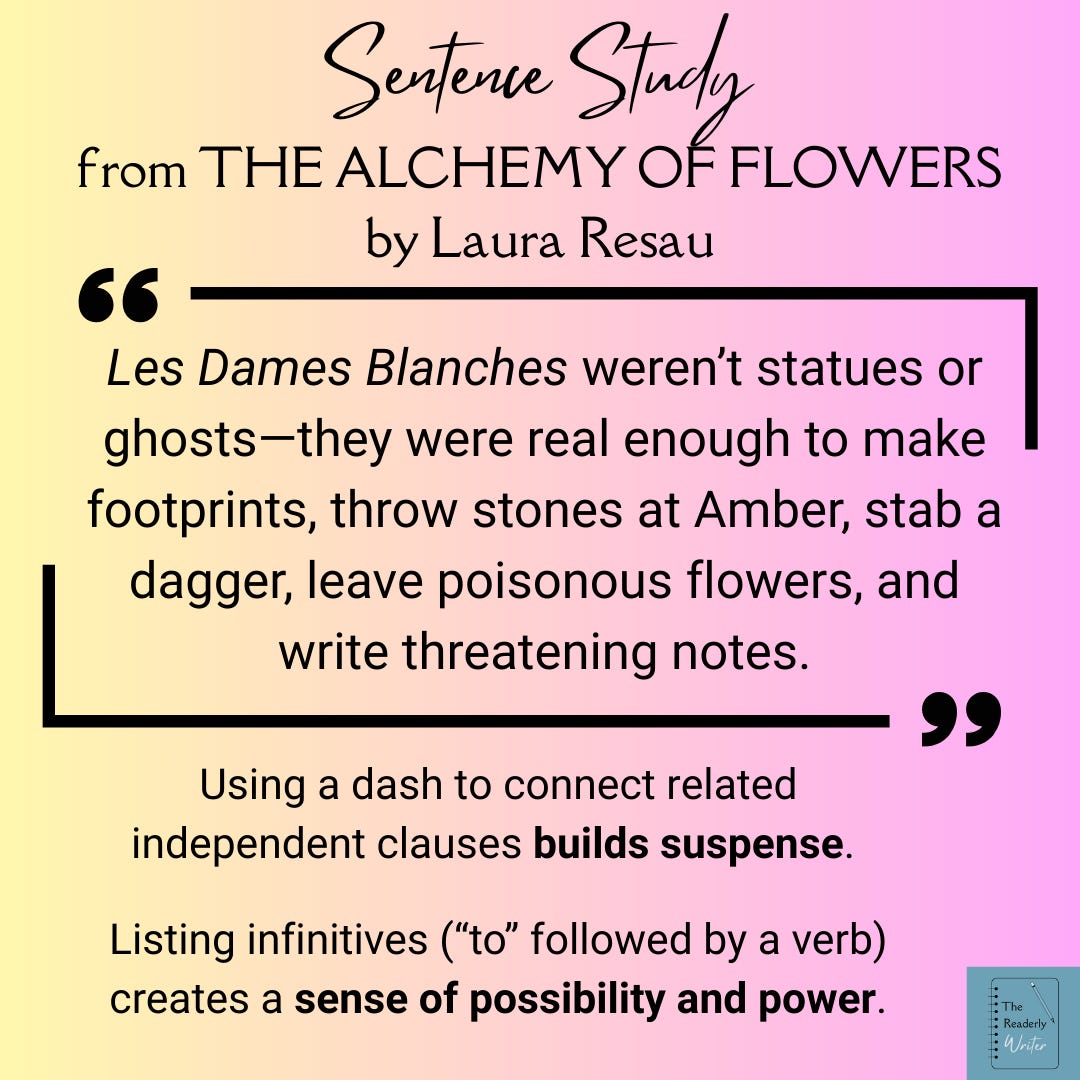You Should Read THE ALCHEMY OF FLOWERS by Laura Resau
Read this book if you (a) need an escape (b) daydream about gardens (c) are sick of following the rules (d) owned an Oopsie Daisy doll (e) all of the above
Check out a book recommendation from author Krystelle Bamford after my review! Click on “Read in app” to read the full post.
Last year around this time, I craved brightness in my life. The end of a particularly trying school year brought excitement, yes, but also exhaustion, and reviving my outdoor space seemed necessary. I filled the back of my car with flowers and spent a morning situating them in planters and pots. They were gorgeous until, well, they weren’t.
Despite my desire to be a gardener, I have no talent in that area. If I’m not overwatering plants, then I’m forgetting about them altogether. Combined with the Colorado sun, which has a tendency to be overzealous, flowers and vegetables don’t thrive at my house.
I have absolutely no good advice for maintaining a garden, but I can recommend a book that will transport you to Le Château du Paradis, a garden in the South of France enchanting enough to make you forget all the dead flowers in your past.
In Laura Resau’s forthcoming novel The Alchemy of Flowers, thirty-seven-year-old Eloise’s life resembles the bed of strawberries my dogs trampled last year. She’s reeling from years of infertility followed by a recent divorce. When she finds a mysterious ad in a gardening magazine that requests an “impossible task riddle” and “a résumé of ashes,” Eloise decides to abandon her life in Denver and travel to the Gardens of Paradise (45).
Magic and mystery pervade the walled gardens. Mina, Bao, and Raphaël are the only other residents on the estate, which belongs to the never-glimpsed La Patronne and is overseen by the strangely cold Antoinette. La Patronne makes odd requests, such as banning children from the premises and requiring employees to stay indoors at dusk. As Raphaël explains to Eloise, “Until half a century ago, a secretive family owned the estate. . . . There were a series of disappearances and deaths, and then La Patronne took over” (48).
Curious things begin to happen. Eloise sees white-clad figures roaming the garden, and unfamiliar objects appear in her living space. A market vendor tells her, “If you ask me, someone’s playing games over there, pretending to be a goddess. And using those plants to play with one’s mind, if you know what I mean” (228). When Eloise questions the others, she’s told to ignore the bizarre happenings and simply follow the rules.
At first, the charming setting makes it easy for her to play along:
“Fairy lights glowed through the trees, pulling me to the edge of a clearing. In the center sat a round table, lit by candles and set with pottery plates and wooden utensils and vases of feathery ferns, steaming pots and pitchers of water and bottles of wine. Lanterns hung from cedar and pine branches. A one-room stone kitchen, its windows yellow against the darkness, was tucked into the trees. I peered through the doorway at an old-fashioned stove, breathed in the scent of spiced stew” (28).
Meals in Paradise are as alluring as the surroundings.
But Eloise has followed the rules for her entire life, and the pursuit has left her unsatisfied. She reflects, “Most of my adult life had been about withholding every indulgence, tempering every pleasure—daily sacrifices for something monumental that never came to pass” (29). As unsettling occurrences accumulate, Eloise finds herself unable to stick to La Patronne’s expectations. It’s only as she pushes against the rules that she begins to heal herself.
It’s a lesson we all need to learn, especially women. The other day I told a friend about a sticker chart I had as a kid. I think it was meant to track the nights I went without sucking my fingers. I know my reward for filling it was an Oopsie Daisy doll. Leave it to the ‘90s to tell girls we could be anything while also selling us toys that crawled across the floor, fell over, and then cried at us. By turning “playing” into “mothering, the makers of Oopsie Daisy, Waterbabies1, and similar dolls told us what role we were meant to inhabit when we were older. They also insisted that role would be fun—and when, years later, it turned out to be very, very hard, the guilt was as real as those dolls were fake.
As Eloise discovers, despite societal pressure, a woman never plays only one role: “We would find a way to live in harmony in these gardens. We, of course, meaning the Triple Goddess inside and outside of myself, in all her forms” (235). The Alchemy of Flowers is a book about being open to possibilities and embracing different (often contrary) aspects of yourself.
I’m not sure I’ll ever be able to keep anything alive that doesn’t actively whine at me to feed it,2 but any time I’m longing for some enchantment, I can return to Resau’s evocative writing. Whether your thumbs are green or brown or somewhere in between, you should read The Alchemy of Flowers, which comes out at the end of July. Thanks to Laura Pritchett, who first recommended this book to me!
Last month, I shared a recommendation of Krystelle Bamford’s Idle Grounds. If you’d like to learn more about her work, check out her website or order Idle Grounds from Bookshop.org. She graciously shared a book recommendation with us this month! Here’s why she thinks you should check out The Weak Spot by Lucie Elven.
This one is already added to my list. Thanks, Krystelle!
A sentence from The Alchemy of Flowers struck me as a great example of effectively using a dash:
This reminded me of an activity I use to review grammar. Instead of giving students rules to practice, I ask students to review sentences from mentor texts, look for patterns, and write rules in their own words. This process is similar to scientists observing lab results and then crafting a conclusion based on what they notice.
Students should not consult any resources while they are crafting their rules. I let them collaborate with partners, but they can’t use the internet or a textbook. It’s okay if they don’t have the “correct” grammar terms to describe what they’re seeing! When they describe the sentence on their own first, they are better able to grasp the rule I share with them later.
If you want to check out this approach, grab a FREE copy of my Dashes and Hyphen Concept Check lesson with examples from Wild by Cheryl Strayed. These sentences are strong examples, but I find this activity works best when you pull sample sentences from a text you’ve already read as a class. You can adapt and modify the document to suit your class. I use this method to teach commas, colons, semicolons, dashes, hyphens, and sentence structure. It’s also a great tool to use for sentence modeling.
I also had a Waterbabies doll, which traumatically developed a hole in its neck and leaked/died all over me. After that, my sister and decided filling newspaper delivery bags with water, tying them off, and wrapping them in towels would work just as well.
Dogs and kids do well at my house. Fish, plants, and hamsters—not so much.














I can’t keep plants alive either, but this book sounds amazing 🤩